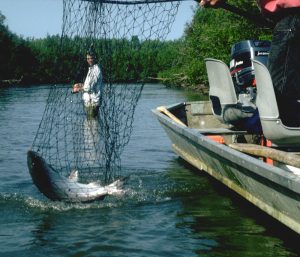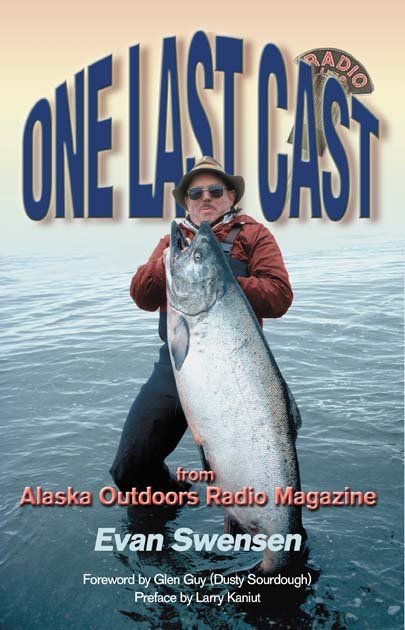One Last Cast
From Alaska Outdoors Radio Magazine
By Evan Swensen
Chapter Sixty Nine
Angler’s Telegraph

Sportfishing is Alaska’s number one sport and outdoor recreation activity. More people participate in fishing than in all other Alaska leisure activities combined. Alaskans spend their vacations, holidays, days off, and time before and after work in pursuit of fish. A large percentage of visitors to the Great Land spend their time with rod in hand, and millions yet to visit dream of fishing Alaska.
Alaska is a land of unlimited fishing opportunities but getting your arms around the entire Alaska angling possibilities in one lifetime is almost impossible. For more than six decades, I’ve fished the state, both for pleasure and as my vocation, and I have only approached the potential.
Unlike most other states where fishermen are required to go to the fish, Alaska is unique—the fish come to the angler. Each season, five species of Pacific salmon migrate to their natal streams, bringing other varieties with them. Following the salmon, these beggars seek an easy meal, mostly salmon eggs. This phenomenon provides fish-hatchery-like populations for anglers to throw a line to.
The precise time of the run’s return to a given watershed cannot be predicted, but it will be within a few days of its anticipated occurrence. The miracle of returning fish is almost exceeded by the marvel of how quickly the word spreads to waiting anglers. A whispered, “Reds are in the Russian,” is heard seemingly simultaneously by thousands of waiting sportsmen. One day the stream is void of anglers—and fish—and the next morning, the banks are lined with the hopeful. Every area along the road system in the state enjoys the same kind of angler’s telegraph. Gas stations, restaurants, gift stores, and tackle shops know within an hour when the first few fish are taken from any roadside water.
If an angler is on the stream concurrent with the spawning run, it is almost impossible not to catch fish, even if only basic fishing techniques are employed. More important than all the how-to, where-to books and guides written, information obtained from local sources is the most reliable. Anglers can get more real angling assistance from filling station attendants, store clerks, and waitresses than from a library of written material and a month of reading. Books may predict the run within a week, but the guy pumping gas or the gal serving breakfast is the best source for timely and helpful information about the run: their source—angler’s telegraph.


